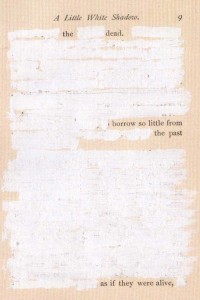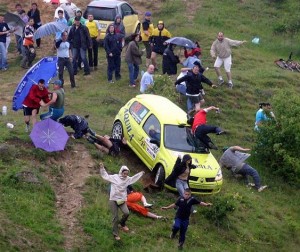What the fuck is cheese?
 In Dave Chappelle’s “what the fuck is juice?” joke, poor black people limited to sub-quality “purple drink” have no idea about the concept of juice as derived from an actual fruit. The racial implications of Chappelle’s humor are too complex for me to get into, and not what this post is about, so let’s just say I find the joke profound. In D.F. Wallace’s “This is Water” speech, wherein fish, asking “what is water?” take for granted the most essential constituent of their existence, Wallace ends by telling us “this is water,” meaning, we are the fish, and that cognizance of the things around us, which leads to positive/proactive thinking, is our responsibility. (Of course, one thinks about the last decision he made, an act which deserves reticence.) And so, dear writerly people, at this juncture I ask you what the fuck is cheese?
In Dave Chappelle’s “what the fuck is juice?” joke, poor black people limited to sub-quality “purple drink” have no idea about the concept of juice as derived from an actual fruit. The racial implications of Chappelle’s humor are too complex for me to get into, and not what this post is about, so let’s just say I find the joke profound. In D.F. Wallace’s “This is Water” speech, wherein fish, asking “what is water?” take for granted the most essential constituent of their existence, Wallace ends by telling us “this is water,” meaning, we are the fish, and that cognizance of the things around us, which leads to positive/proactive thinking, is our responsibility. (Of course, one thinks about the last decision he made, an act which deserves reticence.) And so, dear writerly people, at this juncture I ask you what the fuck is cheese?
Cheese, that which is cliche, corny, sentimental, and all other vague no-nos subject to interpretation. “Saint Judas” by James Wright, one of my favorite poems, tip toes on cheesiness with lines which I’ve strike-thoughed:
Writing/Editing Prompt: Vitiligo

Turns out, Michael Jackson really did have vitiligo. All this time, I’ve assumed—like so many others—that he was bleaching out his skin to look whiter. (Which belief now has me questioning myself pretty seriously. So I’m under the impression one of the richest black entertainers in the world was, when given the resources to fulfill his deepest yearnings, at the very core of his being he found that he wanted most of all to look like me? How’s that for arrogance.)
Anyway, as a kind of tribute to the guy, let’s subject some of our writing to a little vitiligo, shall we? Much like Mary Ruefle (oh, God. Mary Ruefle!) did with her book A Little White Shadow, take a printed page (or two, or three, or 60) and go at it with the white out. But use your own writing—not the writing of some other person. Infect your own work with vitiligo as a way of apologizing for never believing that Michael Jackson had vitiligo.
Remember: vitiligo spreads from a single point. It grow. Start at a single word and move around to surrounding words. Be deliberate, though, so some kind of meaning remains. (Note that I say some kind of meaning. Feel free to define that however you want. Feel free to consult this Poetry Foundation article by Ross Simonini.)
For ADVANCED students: spread your white spots without paying to what you are vanishing. Just make stuff go away. And then, as Michael Jackson did, go right ahead and perform some plastic surgery on what’s left over in order to find a new story in the wreckage of the old. Shaves some letters off the words. Add some letters to the words. Pull some letters from one word and give them to another. Make up some words and add them to the piece of writing. Take some words from the dictionary and add them to the piece in a place that makes the piece look nice. (That is, use the skeleton of the old work to write something new. Maybe keep the skeleton in place, though. You don’t want the body to fall into a heap.)
(Right?)
Glowing tutorial

Faster Times contributors banner
I’m always struck by how all the contributors at The Faster Times are glowing. Sometimes I feel people think we at HTMLGIANT also want our contributors to glow, but that we don’t have the photoshop skillz. I say NO! — we do have the photoshop skillz, we just never got around to doing a “mass glow” for our contributors.
Glowing is pictorial lubrication, and augments the experience of looking at a bio pic. For writers who want to glow, what follows is a photoshop tutorial on how to make that happen.
The Deceptive Cadence
 There is something in classical music called the deceptive cadence, in which the chord progression seems to build toward one thing–to resolve itself in a way that is naturally pleasing/tension-releasing to us–but instead does something different and a little bit wrong. (Technically, it is a five chord that doesn’t go down to a one chord like it ought.)
There is something in classical music called the deceptive cadence, in which the chord progression seems to build toward one thing–to resolve itself in a way that is naturally pleasing/tension-releasing to us–but instead does something different and a little bit wrong. (Technically, it is a five chord that doesn’t go down to a one chord like it ought.)
In a wonderful TED talk called “Feeling Chopin,” Benjamin Zander talks about the deceptive cadence in Chopin’s Prelude in E Minor (Op. 28 No. 4). I’m performing the prelude tomorrow, so it is all I can think about today, which is why I’m writing about it now. Zander suggests raising one’s eyebrows at the audience when playing the deceptive cadence, so they get it, but I’m not really close to the level of being able to do two things for my audience at one time.
It’s really worth a watch, even if you aren’t performing the piece tomorrow. Zander compares what Chopin is doing to what Shakespeare does in Hamlet–Hamlet finding out in Act I that his uncle killed his father but dithering around until Act V to do something about it, because otherwise it would end too soon. And thus a series of deceptive cadences. In the prelude, we know what we want from the beginning, right from the first B–we want the E. But we don’t get it till the very last, after a series of heart-wrenching (truly–it is the saddest) fake-outs.
Can you think of any poems or stories with a deceptive cadence, where you feel entirely set up for something and then don’t get it until much later? How is it done? I mean, I would think there are lots of them, but I’m curious about just how purely formal they could be in writing, rather than plot-based. Or, what other formal devices do you find useful from other art forms?
Sarki on Lish
 M Sarki with an interesting defense (I guess) of Gordon Lish at EWN. I found the intrigue here in Sarki, not in Lish (not so riveting to revisit the Carver thing). Not sure I’ve seen such reliance on another in judging an individual work. Sarki sends his poems to Lish via mail then gets a YES, NO, or SO SO written on the poem. Sarki writes:
M Sarki with an interesting defense (I guess) of Gordon Lish at EWN. I found the intrigue here in Sarki, not in Lish (not so riveting to revisit the Carver thing). Not sure I’ve seen such reliance on another in judging an individual work. Sarki sends his poems to Lish via mail then gets a YES, NO, or SO SO written on the poem. Sarki writes:
But after so many years of working with him I pretty much have a feel for what he’ll like and what he won’t. I get mostly a Yes these days.
Michael Kimball Guest Lecture #2: Keeping Going
So let’s say we have a great opening and maybe even a good idea or an interesting voice to go with it. Now what? How does the writer keep going? One of the things that has helped me keep going while I’m working on a novel is not thinking about it. That is, I try to not think about what I’m writing when I’m getting it down (the thinking, so to speak, comes later). For me, it’s just a voice speaking, a way of talking, and I’m trying to be receptive to it, open. I’m just trying to get from one sentence to the next sentence. Often, I do this by looking at the previous sentence—its syntax, the words in play, the acoustics of it—I’m thinking in these small ways, but not so much in bigger ways (say, story or plot or idea). I’m just trying to get material down, which is the hardest part for me. After that, after I have something to work with, then I feel like I can do something with whatever I have on the page. It’s the blankness that is difficult for me, filling in the blankness.
Here are some quotes from Sam Lipsyte, Gary Lutz, Joseph Young, and Blake Butler that discuss a similar process in somewhat different ways.
R. Kelly on Writing
“It’s almost like mama jokes to me. You got some good mama jokes and I got some, you hit me up then I got some. You go first show me what you got and if they good we gonna trade off and use em. We just change up and trade up.”
“You’re trying to throw a rock at the top of the Sears tower.”
“When I’m up twenty I always play like I’m down forty.”
“I usually don’t hear my influences til the song is over with. When I’m writing I’m so into what I’m hearing on the radio in my head that I’m just like, ‘Wow, I can’t wait to finish this so everybody else can hear what I’ve just heard.’ It’s like there’s a monster in the backyard, and you’re just like, ‘Look out the window, y’all!’ I just want people to hear what’s in my head and I just be anxious to get into the studio and get it done. Once it’s done it’s like, ‘Oh man, that riff right there is like some Sam Cooke shit.’”
“My greatest competition is, well, me…”
“I’m pregnant by music.”
“It’s a silent competition. But it’s all good if you know how to keep it in perspective and have fun with it. A lot of kats don’t understand that the point of a remix is to make it better than the record, not just change it. They think that if they just change it that should do it, but what they’re really doing is just killing the original song.”
“Not only did I get an A in music but I got an A in ladies.”
“Sometimes the doctor has to inject his own self.”




